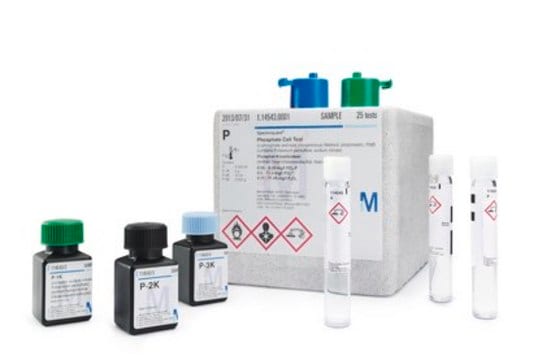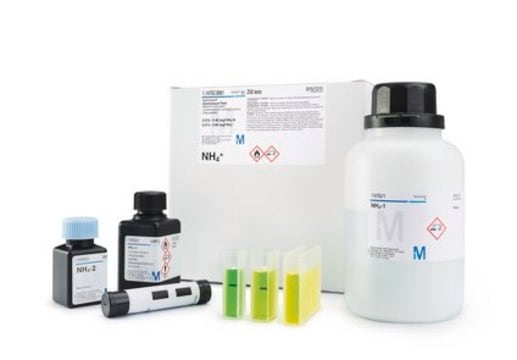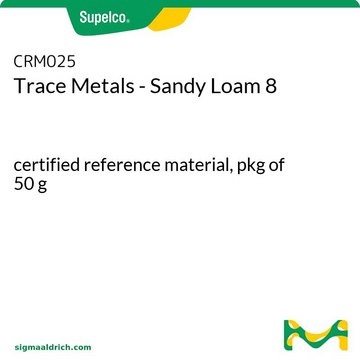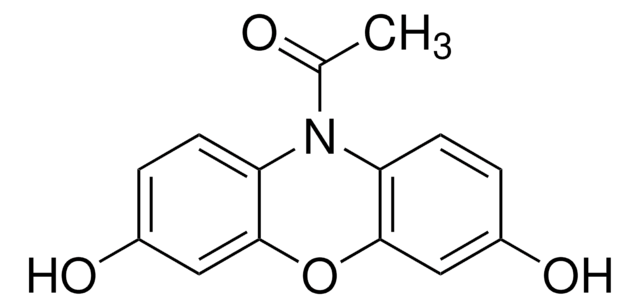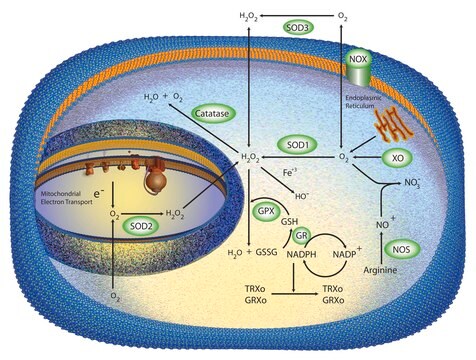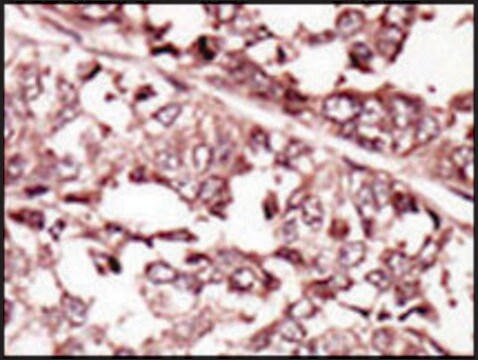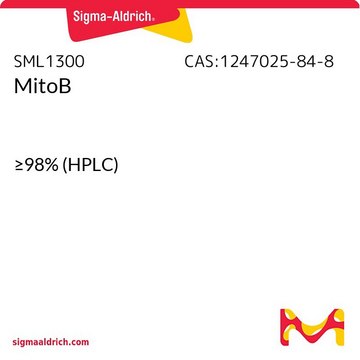MAK164
Intracellular Hydrogen Peroxide Assay
sufficient for 200 fluorometric tests (green fluorescence)
Sinonimo/i:
Hydrogen Peroxide Detection in Cells
Autenticatiper visualizzare i prezzi riservati alla tua organizzazione & contrattuali
About This Item
Prodotti consigliati
impiego
sufficient for 200 fluorometric tests (green fluorescence)
Metodo di rivelazione
fluorometric
Malattie correlate
aging/geriatric diseases; neurological disorders; pulmonary disorders; orthopedic diseases; cardiovascular diseases
Temperatura di conservazione
−20°C
Descrizione generale
Hydrogen peroxide, a reactive oxygen species produced through the metabolism of molecular oxygen, serves as both an intracellular signaling messenger and a source of oxidative stress. Hydrogen peroxide is generated in cells via multiple mechanisms such as the NOX-mediated ROS production by neutrophils and macrophages (respiratory burst) or by the dismutase of superoxide anions produced as a result of electron leak during mitochondrial respiration. Abnormal hydrogen peroxide production contributes to oxidative cell damage and the progression of diseases such as asthma, atherosclerosis, osteoporosis, and neurodegeneration.
Applicazioni
Intracellular hydrogen peroxide assay kit has been used to measure intracellular hydrogen peroxide levels.
Caratteristiche e vantaggi
Compatible with high-throughput handling systems.
Compatibilità
This kit is suitable for the detection of hydrogen peroxide in living cells and a variety of samples such as cell extracts and liquids.
Principio
The Intracellular Hydrogen Peroxide Assay Kit provides a simple and reproducible method to quantify hydrogen peroxide levels in living cells and in a variety of other samples such as cellular extracts. This kit utilizes a unique cell-permeable sensor that generates a fluorescent product (λex = 490/λem = 520 nm) after reaction with hydrogen peroxide that can be analyzed by a fluorescent microplate reader, flow cytometer, or fluorescent microscope.
Codice della classe di stoccaggio
10 - Combustible liquids
Classe di pericolosità dell'acqua (WGK)
WGK 3
Scegli una delle versioni più recenti:
Certificati d'analisi (COA)
Lot/Batch Number
Non trovi la versione di tuo interesse?
Se hai bisogno di una versione specifica, puoi cercare il certificato tramite il numero di lotto.
Possiedi già questo prodotto?
I documenti relativi ai prodotti acquistati recentemente sono disponibili nell’Archivio dei documenti.
I clienti hanno visto anche
Evidence of oxidative stress and mitochondrial dysfunction in spinocerebellar ataxia type 2 (SCA2) patient fibroblasts: effect of coenzyme Q10 supplementation on these parameters.
Cornelius N, et al.
Mitochondrion, 34, 103-114 (2017)
Emily A Teslow et al.
Molecular oncology, 13(4), 894-908 (2019-01-13)
Obesity is a risk factor for triple-negative breast cancer (TNBC) incidence and poor outcomes, but the underlying molecular biology remains unknown. We previously identified in TNBC cell cultures that expression of epigenetic reader methyl-CpG-binding domain protein 2 (MBD2), specifically the
Maqusood Ahamed et al.
International journal of nanomedicine, 16, 89-104 (2021-01-16)
Therapeutic selectivity and drug resistance are critical issues in cancer therapy. Currently, zinc oxide nanoparticles (ZnO NPs) hold considerable promise to tackle this problem due to their tunable physicochemical properties. This work was designed to prepare SnO2-doped ZnO NPs/reduced graphene
Robert B Rosenblatt et al.
Theranostics, 11(2), 602-613 (2021-01-05)
Mechanical forces from non-ablative pulsed focused ultrasound (pFUS) generate pro-inflammatory tumor microenvironments (TME), marked by increased cytokines, chemokines, and trophic factors, as well as immune cell infiltration and reduced tumor growth. pFUS also causes DNA damage within tumors, which is
Nanna Cornelius et al.
Mitochondrion, 34, 103-114 (2017-03-07)
Spinocerebellar ataxia type 2 (SCA2) is a rare neurodegenerative disorder caused by a CAG repeat expansion in the ataxin-2 gene. We show increased oxidative stress, abnormalities in the antioxidant system, changes in complexes involved in oxidative phosphorylation and changes in
Il team dei nostri ricercatori vanta grande esperienza in tutte le aree della ricerca quali Life Science, scienza dei materiali, sintesi chimica, cromatografia, discipline analitiche, ecc..
Contatta l'Assistenza Tecnica.
